


Home » Distinguishing the American English Coonhound From the Other Coonhound Breeds
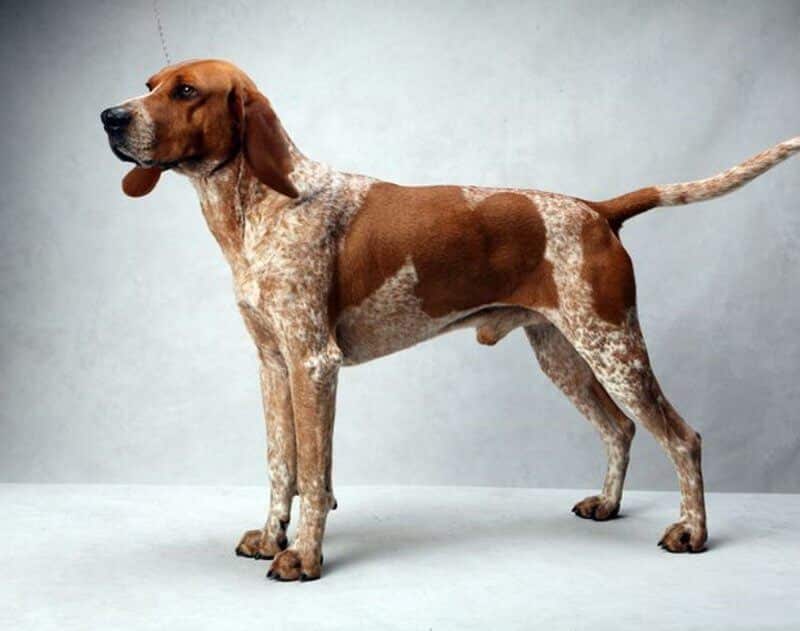
The most frequently asked question I receive when conducting Judges’ Education is, “What separates the American English Coonhound from the others?”
Considering all but two of the coonhound breeds (Plott and American Leopard Hound) can be traced back to the Virginia Hounds, the question is legitimate.
We can probably eliminate the Plott and American Leopard Hound from our comparison. Both breeds have noticeable characteristics that separate them from the other coonhound breeds.
The Plott is the brindle coonhound with a perceptibly different headpiece and shorter ears, and it’s the smallest of the Coonhound breeds.
The American Leopard Hound is not yet fully recognized by AKC, residing in the Foundation Stock Service, and is the only coonhound that can have a tail of any length, including a natural bob-tail.
In addition, we can eliminate the Black and Tan Coonhound for its noticeable differences from the American English Coonhound. The B&T is the largest of the Coonhound breeds, and true to its name, the coat color can only be black with tan points.
The Black and Tan Coonhound also displays hints of the Bloodhound, which was used in its development, being the heaviest in bone and substance, having a longer ear, and with looser skin on the head and body than the other coonhound breeds.
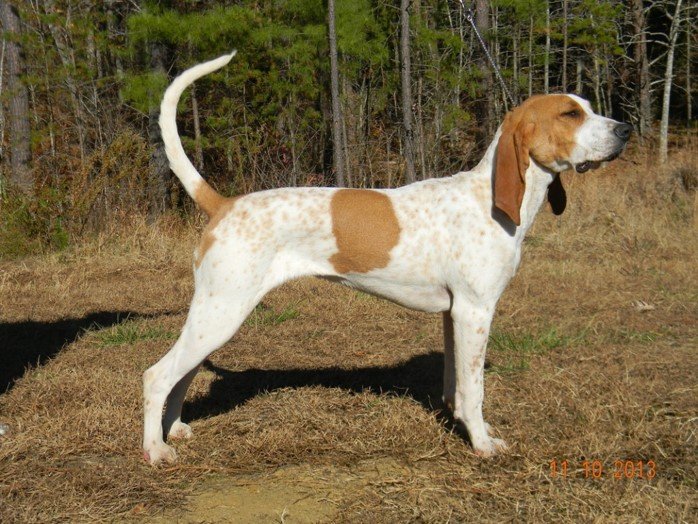
This leaves us to compare the American English, Bluetick, Redbone, and Treeing Walker Coonhounds.
Let’s start with a little history, as that will explain why these remaining coonhounds are similar in many regards.
Three men are credited with the development of the coonhound as we know it today. The first is Robert Brooke who brought a pack of hounds with him from England to America in the mid-1600s. In 1742, a Virginian named Thomas Walker imported some hounds from England. Then, in 1770, George Washington (known to be an avid fox hunter) also imported some foxhounds from England.
The combination of these dogs became the foundation of the hounds known as “Virginia Hounds” from which most Coonhounds are descended.
Through careful, selective breeding, they have been developed to handle the rougher terrain in the Americas and were adapted to hunt local game, such as raccoon, cougar, and even bear.
The English Coonhound was first registered with the United Kennel Club (UKC) in 1905 as the English Fox and Coonhound.
Later, separations were made based on color. Although these same colors are still present in the American English Coonhound, the blue ticked-colored dogs became the Bluetick Coonhound and the tri-colored dogs became the Treeing Walker Coonhound. Both of these breeds first became registered by UKC in 1945. Those not separated then became the English Coonhound, and when accepted into AKC, they became known as the American English Coonhound.
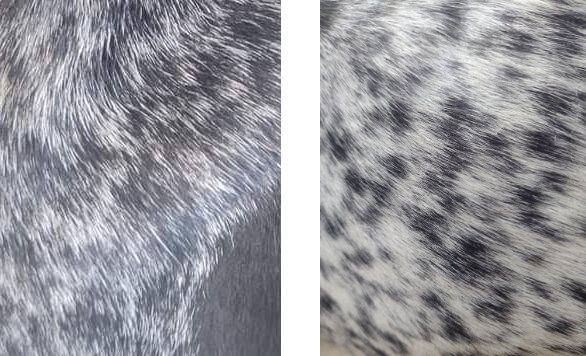
So, what then sets the American English Coonhound apart from the rest? Keep in mind that the differences are subtle, as the breed standards overlap in many areas, but there are
differences nonetheless.
With the Plott Hound, Leopard Hound, and Black and Tan Coonhound out of the equation, in comparison to the remaining coonhound breeds, the American English is going to be the smaller, racier, and tighter-made coonhound. However, they should never be fine-boned nor should they have an exaggerated tuck-up. Despite being the raciest, the American English should still have a good amount of substance, being a well-muscled athlete capable of running through brush and timber all night long.
The size stated in the breed standard for the Bluetick has a wider range than the American English (Bluetick males being 22″-27″ and American English males being 24″-26″), but overall, the Bluetick Coonhound is a slightly larger dog with more bone and body than the American English Coonhound.
Bluetick Coonhounds are going to have a somewhat “courser” head, with more flew and a pronounced occiput, compared to the more refined head of the American English.
Coloring in the Bluetick standard calls for “a dark blue, thickly mottled body, spotted by various shaped black spots… head and ears are predominately black, with or without
tan markings.”
The ticking on a Bluetick should be more blue than white, whereas the ticking on a blue-ticked or tri-colored American English tends to be “open,” with more white showing.
An American English Coonhound can be colored just like a Bluetick, but a similarly marked tri-colored American English coonhound can have a brown head and ears, along with brown that reaches much higher on the legs. In contrast, the Bluetick Coonhound can never have a brown head and ears, and brown on the legs should not extend beyond the pasterns and hocks.
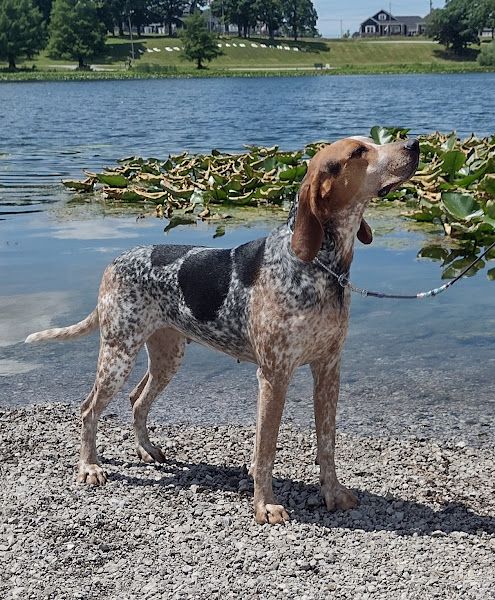
The head of the Treeing Walker Coonhound will have more flew and a pronounced occiput, similar to the Bluetick. They range slightly larger than the American English and tend to be longer than tall, whereas the American English standard calls for proportions that are square to slightly off-square.
While a small amount is permissible, rarely will the Treeing Walker have ticking. By contrast, the American English is required to have at least 10 percent ticking over the body.
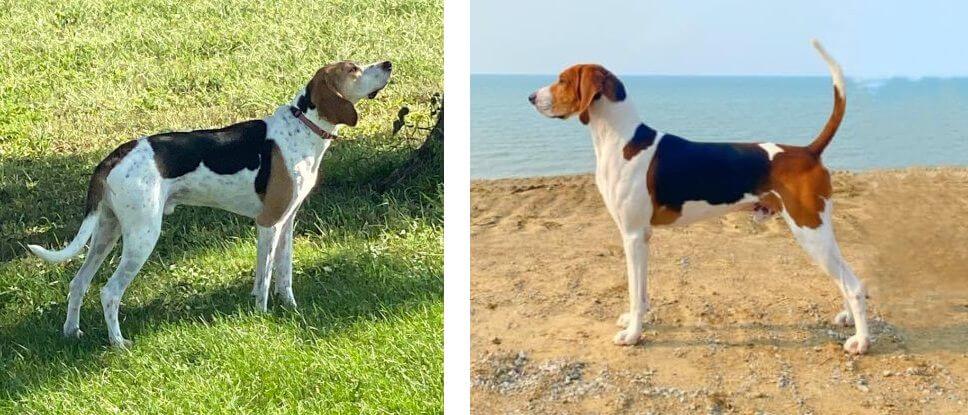
The obvious difference between the American English Coonhound and the Redbone Coonhound is the glorious red-mahogany coat of the Redbone Coonhound.
The Redbone will have a more pronounced stop and a slightly more domed head than the American English. Ear length on the Redbone averages longer than on the American English. The length of ear on the American English Coonhound does not have to extend to the tip of the nose, only to the point where the nose meets the muzzle. The average size of the Redbone is larger and somewhat heavier in bone compared to the American English Coonhound.
As for their temperament, the American English Coonhound standard is the only coonhound standard that states a shy, timid dog should be faulted. This coonhound is a very friendly, outgoing dog, sociable with both humans and canines. So, yes, shyness or timidity should be faulted, as should aggression towards another dog.
The only disqualification for color in the American English Coonhound standard is a brindle dog, or a tri-colored or solid-colored dog with less than 10 percent ticking over its body. Other than that, color should be the last concern when judging the American English as they come in a rainbow of colors, each equally acceptable.

*The UKC English Coonhound and the AKC American English Coonhound are the same breed. The “American” was added to the name in AKC to indicate it is an American breed descended from English Foxhounds.
*No, the Redbone did not get its name from its color, but rather from one of the men credited with its development, Peter Redbone.
The best way to ensure a long and happy relationship with a purebred dog is to purchase one from a responsible breeder. Not sure where to begin finding a breeder? Contact the National Parent Club’s Breeder Referral person, which you can find on the AKC Breeder Referral Contacts page.
Did you know nearly every recognized AKC purebred has a dedicated rescue group? Find your new best friend on the AKC Rescue Network Listing.
Showsight Magazine is the only publication to offer dedicated Digital Breed Magazines for ALL recognized AKC Breeds.
Read and learn more about the sweet American English Coonhound dog breed with articles and information in our American English Coonhound Dog Breed Magazine.
Error embedding FlippingBook shortcode, please check the flipbook url. (https://digital.showsightmagazine.com/view/748716/)
